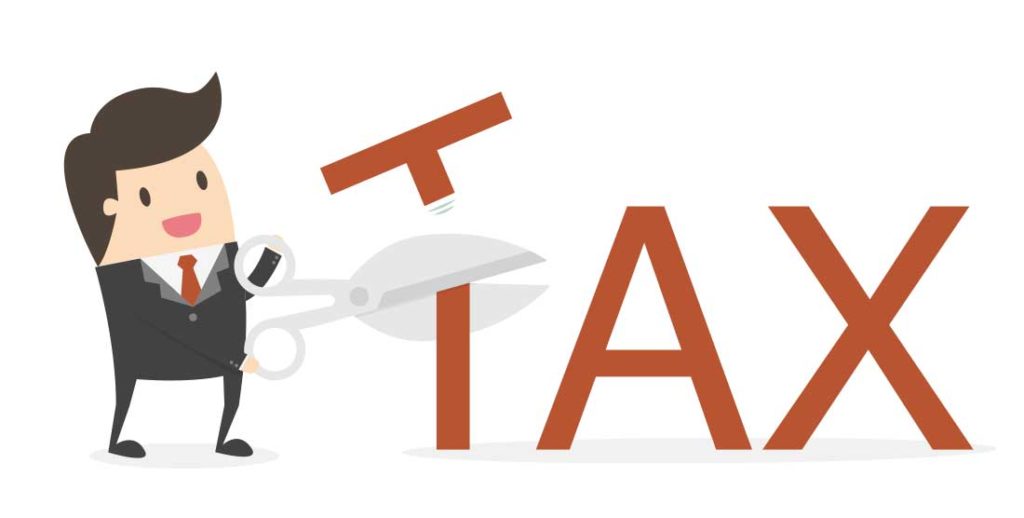
Written by Stephen L. Hanley, Investment Strategist
Evergreen Wealth Management
Many people are wondering what the tax cut means for the US stock market. We thought it might be helpful to take a look at some historical patterns and overlay a bit of common sense to consider what tax cuts might mean for the future. With that said, let me quote famous investor, Warren Buffet, in saying, “If past history was all that is needed to play the game of money, the richest people would be librarians.”
Key Starting Points
- Some portion of tax cuts will be passed along to investors.
- History generally shows that companies don’t see as big a benefit from tax cuts as many may think, on aggregate.
- Market valuations relative to interest rates are likely a stronger driver for 2018 returns, but may be overshadowed by tax talk.
- Removing uncertainty is the real win for markets.
Part of the stock market’s growth in 2017 was directly related to the possibility of tax cuts coming. Many companies built some amount of future tax cuts into their 2018 earnings projections. As a result, this optimism for increased earnings helped add to the market rally in 2017. Additionally, lower corporate tax rates certainly will not hurt companies in 2018, and will allow some added money flow into the economy. Higher dividends, stock buybacks, bonuses, increased salaries, debt pay down, buyouts, expansion, among other items, are ways in which companies may deploy the benefit of the tax cut; while all of these moves are likely to be beneficial, some of them have greater employee, market, and economic benefit than others.
History shows the actual benefits of a tax cut are usually not as large as many may think. For example; after accounting for tax breaks and structural work-around, U.S. corporate rates are well below the 35 percent top statutory rate and are currently in-line with corporate rates in similar countries.
(source: The Treasury Office of Tax Analysis)
Specifically, the average corporate tax rate on profits from new investments made in the U.S. is 24 percent; the average corporate rate on profits from new investments made by companies in other “Group of Seven” (G-7) industrialized, democratic countries, weighted by the size of their economies, is 21 percent.*
While cutting the corporate rate from 35% to 20% will certainly help some companies, many larger companies pay around 24% under current law, using existing tax breaks and allowable structures. Therefore, the new tax code will simplify this element, but the tax-break may not be as profound as it appears at first glance.
Since 1927, corporate taxes have been reduced 10 times, and the year following a tax cut, U.S. stocks have risen six times – 60% of instances – averaging 11.3% increase per year. Conversely, corporate taxes have been increased 13 times over that period, seeing stocks rise the next year nine times – 69% of instances – averaging 12.5% annually. Cuts? Hikes? The stock market seems to experience the same frequency and size of gains, regardless.*
The bigger driver of stock returns long-term, tends to be valuations relative to interest rates.** Visualize buying a home for a moment. With interest rates at 15%, the amount of home you can afford is much less than it is today when rates are much lower. Why? Higher interest rates cause your monthly payments to be much higher because of the greater cost of borrowing. If your mortgage rate dropped to 2%, you could afford a much larger home. The same dynamic holds true with valuation of a stock market made up of companies, which are comprised of assets that drive earnings. Companies can return much more cash to shareholders when interest rates are lower. If rates get too high, the company will need to allocate more of its earnings to pay down debt, which slows growth, netting less money returned to shareholders in the form of dividends.
The current market expectation of 6-8% annualized returns over the next 5 years may seem low relative to possible temporary declines of 20, 30, or 40%. However, when compared to a 2.4% yield on a 10-year Treasury Bond, a 7% return possibility still looks really good. Until we experience a major fear event or higher interest rates; stocks will continue to look like the best game in town, albeit at a much higher level of risk than eight years ago. With Jerome Powell as new Fed Chairman, and pressure to leave interest rates very low while reducing bank regulations, we may have an environment for continued market appreciation. With the trend already in motion, corporate tax reform will certainly not hurt the cause of market growth, but the real driver is likely a relationship between interest rates and stocks. In other words, do you want a bond that earns 2.4% or a stock with a 7%+ potential? Until fear intensifies, most investors are choosing stocks.
The ultimate win from tax reform has been the removal of uncertainty. Similar to the presidential election, we have less uncertainty today than we did before the tax law changed. Inevitably, some companies and people will win and some will lose from the change. The certainty now provided allows us as managers to more accurately evaluate each investment with a deeper understanding of the tax consequences of each company’s business strategy. We know companies whom compete solely on price will have increased competition as a result of lower taxes, as new competitors might now be able to underbid them. Companies who maintain stronger brands and service offerings will likely be able to capitalize on retaining more benefit from the tax cut. Moreover, additional clarity around taxes will improve investors’ ability to perform quality analysis of stocks considered for investment, which is always good.
History shows the markets win after a tax cut OR tax hike more often than not, simply due to added clarity about the future. We are bullish because of this clarity but we understand each event and time is unique. Interest rate fluctuations will loom large in moving the long-term market dial, and we must keep a close eye. The future will not be the same as the past and we must remain disciplined to not exercise poor judgment of extreme optimism or pessimism but rather choose a balanced path, rooted in data and fundamentals, to best achieve your objectives.
Disclosure and References
*(The Treasury Office of Tax Analysis, USA Today, Ken Fisher)
**Vanguard Research, Forecasting Stock Returns by Joseph Davis, Ph.D., Roger Aliaga-Díaz, Ph.D., Charles J. Thomas, CFA
***Methodology for projected 6-8% nominal equity return.
Method 1: Vanguard Research, Forecasting Stock Returns by Joseph Davis, Ph.D., Roger Aliaga-Díaz, Ph.D., Charles J. Thomas, CFA.
Method 2: Dividend +Earnings Growth + Valuation = current S&P 500 dividend of 2% + 5 year Earnings Growth of 3-5% + Valuation of -2 – +2%. = 3% to 9%
Method 3: SPY: Book Value: $798.64, Average ROE: 12.7%, Reinvestment Rate: 40%, Price (SPY): $2,716
Using this information, we can compute growth in equity and earnings at 5% annually ([$798.64*.127*.4]/$798.64) and shareholder payouts (dividends and share repurchases) of $76.20 (.127*.6*$798.64), which gives us a yield of 2.8% on the price of $2,716. US stocks could expect earnings power to increase by around 7.8%/year, owing to 5% growth in book value (and therefore earnings at constant ROE) and a 2.8% yield. Returns over time would equal this gain in earnings power after adjusting for any changes in valuation.
Recent Articles

Show Your Work: Why Transparency Matters in Retirement Planning

Unlocking the Mystery of Income Taxes

Social Security Strategy: Do You Have One?

Pension Decision: Just One Critical Piece of Information Is Needed to Decide



